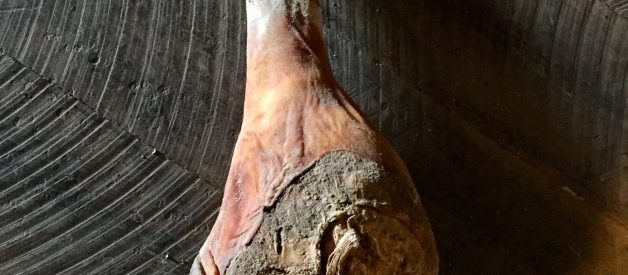Ther?s a lot more to it than just salt and time
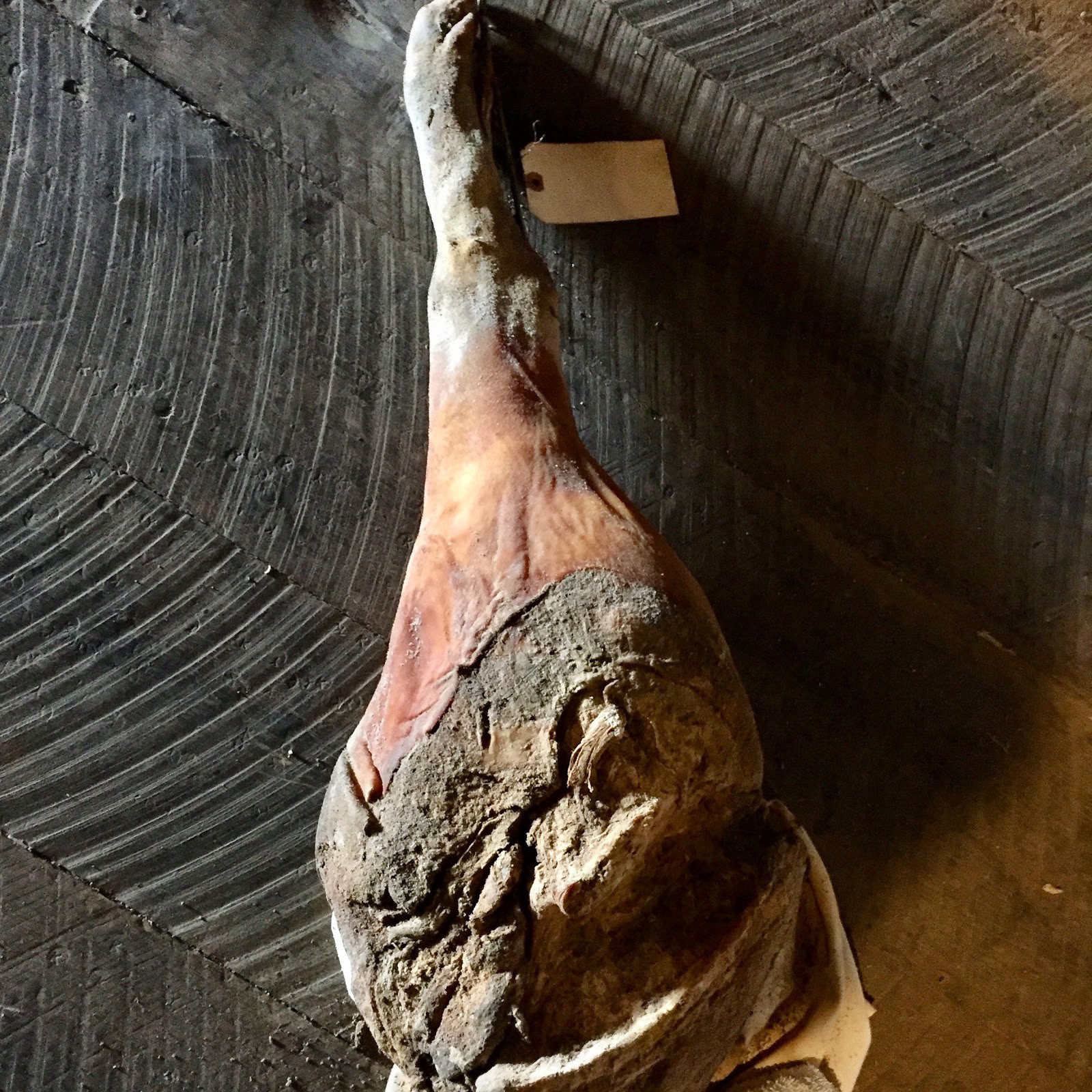 24 month Country Ham- (photo and ham: Andrew McLeod)
24 month Country Ham- (photo and ham: Andrew McLeod)
Cheap scare tactic? Possibly. Does the fact that I used a flashy headline to get the attention of you the reader make the title of this article any less true? Not a chance. It?s quite easy to make someone sick from an improperly handled cured meat product. That fact alone is why we?ve seen so much press surrounding chefs buckling under the pressure of added restrictions from local health departments. A resurgence in popularity of the Country Ham process is seeing more and more ambitious folks trying their hand at curing a ham, often times before they?ve successfully cured something smaller first. Unless you are clear about what your starting and ending salt percentages should be and you know how to get there, it doesn?t make sense to attempt a whole cured ham. I?m very encouraged to see such an interest in the cured meats world today. Lots of home cooks and professional cooks alike are taking a shine to these old practices. However, too often in this case, fools rush in.
I can?t count how many times someone has showed me a photo and asked what went wrong in their ham curing process. My answer is always the same: ?I have no idea what?s happened to this up to this point, so I can?t give any real guidance.? There are just too many variables to be sure in most cases. More often than not, though, it?s a guessing game, especially when the ham curer hasn?t been disciplined about recording any and all aspects about their cure process. If you don?t record your tests, how can you compare what was successful against what wasn?t?
A Country Ham is a whole primal section of the pig, bones skin, trotter and all are included. American country ham is almost always cured using the ?salt box? method. What this means is quite literally a ham is buried in salt under refrigeration. This differs from traditional European style hams that use coarse sea salt and apply it in more measured, conservative quantities. The end result for an American country ham is a product with a much higher salt percentage in a finished product than its European counterparts. They are simply much different products for a variety of reasons, the salting method is just one of the areas that distinguish them apart.
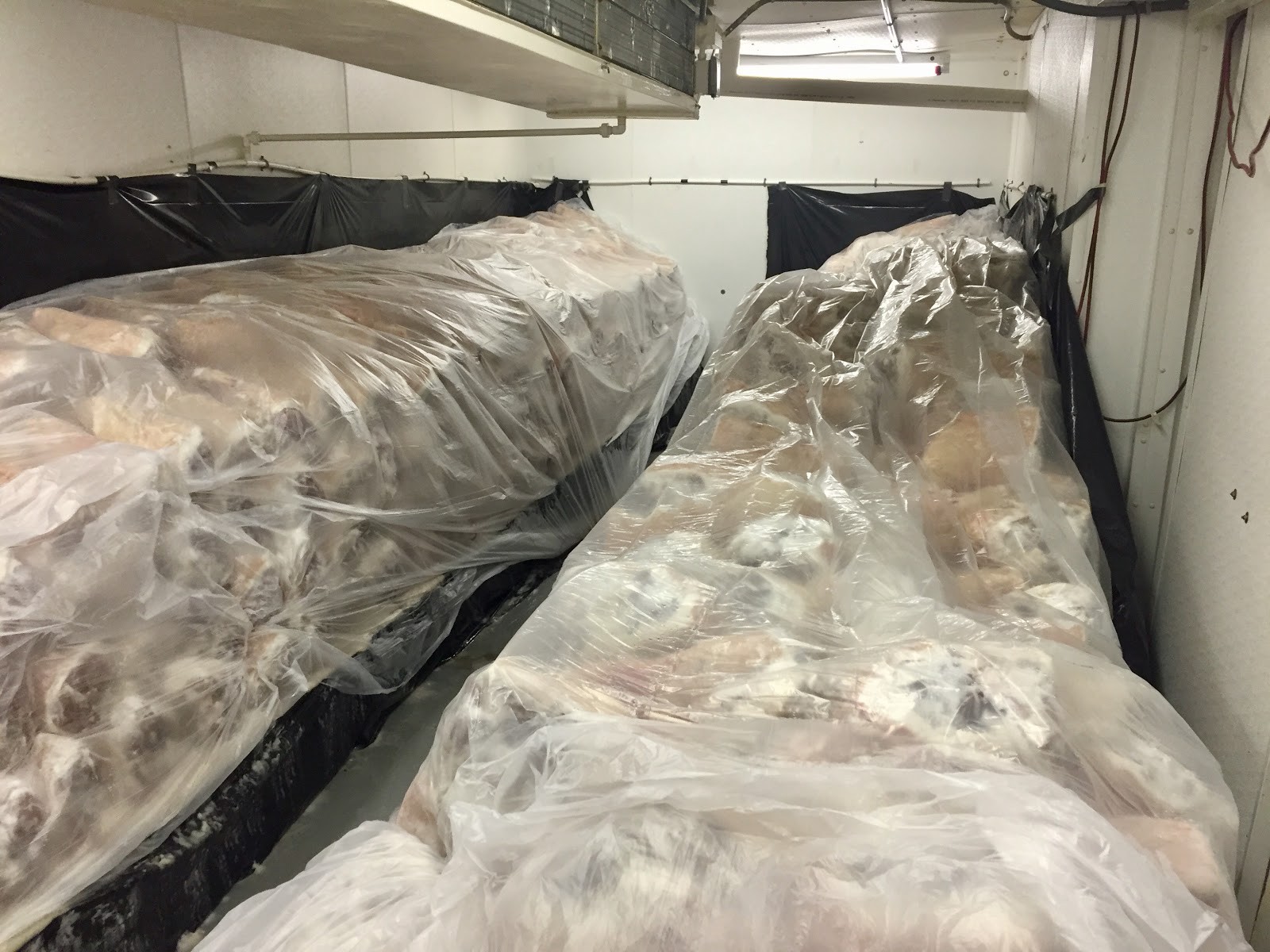 Country hams on salt in Murfreesboro TN, (photo: Andrew McLeod)
Country hams on salt in Murfreesboro TN, (photo: Andrew McLeod)
When a Country Ham ages, it starts to take on the aroma and flavor of its surroundings. This is what it means when someone says ham making is about terroir. Each storied European culture has their own version of a cured whole ham. Serrano in Spain, Bayonne in France, Prosciutto in Italy and of course the American Country Ham. One technique with salting or aging won?t work in a different part of the world because the intricacies of the humidity, ambient temperature and climate are fundamentally different. These days, just about all Country Ham making is done indoors using mechanical controls to regulate temperature, humidity, and air speed. Creating such a regulated environment is accomplished by some simple engineering issues being addressed in the interest of consistency.
One of the greatest ironies of the storied Country Ham industry in the Southern United States is that it lives and dies by the commodity hog industry. The products that I grew up falling in love with were all produced from the tragic industrialized farming system. It didn?t start that way and doesn?t have to stay that way either.
In terms of composition of a ham, lean muscle tissue is approximately composed of 74% water, 21% protein, 5% fat. The proportions of this may change depending of the amount of fat in the animal. Typical muscle structure of a ham has little intramuscular fat unless its from a heritage breed with proper nutrition. Intramuscular fat carries flavor through the meat all the way to the end of the cure cycle. Often times a hog is ?finished?, meaning their diet consists of mostly acorns for example so that acorns become the dominant flavor profile. This process is common in the final three months of the hogs life.
Finishing a hog on a particular nut/legume or other ingredient is a common practice that gives the farmer and or chef some measure of control over the flavor profile of the raw meat. This flavor is carried through the fat, so intramuscular fat is very highly sought after because tertiary flavors like (the acorn finish) come through when fat is present weaving through the muscle fibers. If you can affect the flavor profile of the raw meat, once you?ve salted that meat and over time evaporated out 35?45% of it water content, you?ve effectively magnified that flavor profile to a point that is truly unique and in demand.
The sheer amount of variables present in a meat production problem such as making a shelf stable product using little more than raw protein and salt is staggering. Starting from the breed of pig, how it?s raised, where it?s raised, what is diet consists of, how mature the hog is prior to slaughter. I?ve butchered hogs with all four limbs broken in addition to a sampling of fractured ribs. Those hogs weren?t brought in to process with those broken bones. Any issue in the quality of the supply chain ? from the farmer or the processor to the time it takes for the carcass to drop in temperature after its bled ? can and will affect the raw and finished product.
The list is limitless: the climate and time of year, depending on how long and in what way the ham must travel affects the temperature it reaches before it goes into a walk in cooler where it will be cured. The pH of the meat at the time of carcass inspection and receiving. The variety, quantity, quality and frequency of the salt applied during the curing phase. The time that the ham sits during this curing phase. Whether or not bones are removed and additional blood is let from the ham.
Whether or not the ham is smoked is a major consideration, and if so how long? What type of wood is used? How much smoke? Do the complex compounds present in the smoke help or hurt your process? Do you know how to find out? Do you cap the cut side with sugna? Sugna is the classic mixture of leaf lard and rice flour that?s traditional in prosciutto production. Do you know what the purpose of this practice is?
If you have some pest issues in your facility, it might be a good idea to add some pepper and or chili flakes to the sugna to keep the pests away. Chances are the bugs that would affect a ham aging won?t be readily visible until you hang some meat in there.
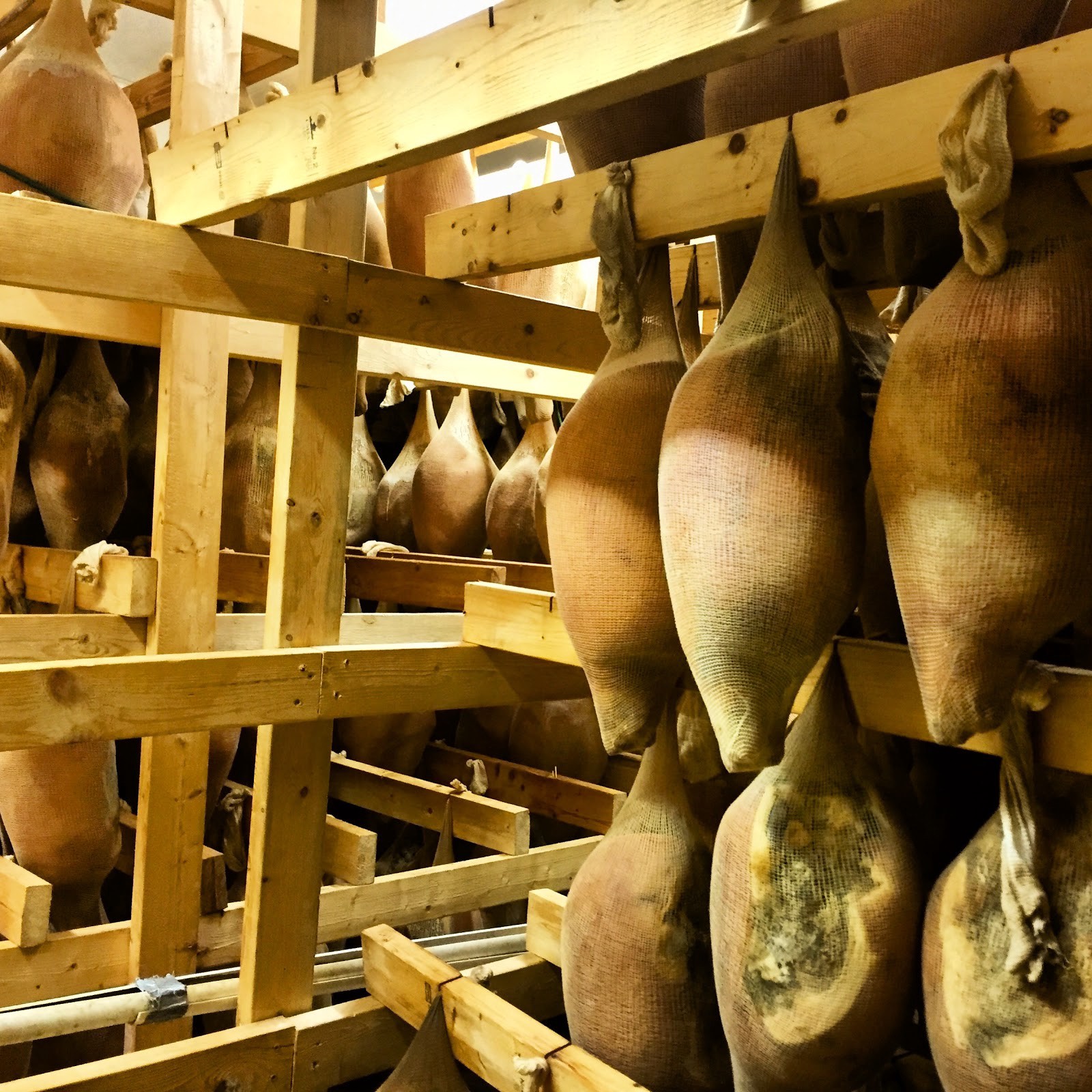 Country Hams aging in Murfreesboro TN (photo: Andrew McLeod)
Country Hams aging in Murfreesboro TN (photo: Andrew McLeod)
If the ham is left too long with too little salt, it?s common for black mold to take over. This is usually a telltale sign that the internal muscle structure has already begun to rot. Sometimes, however, high humidity produces certain molds that are harmless and easy to clean off, and you can adjust relative humidity to prevent that growth in the future. Is there a reliable way for you to adjust your humidity or temperature where you are aging your ham?
Though we can make Country Hams in the South all year long now, we haven?t been able to achieve this for very long at all. Separating these natural cues from our meat production is representative of another layer of understanding and collective cultural knowledge being stripped away from us as a society. Hopefully we can get to the point where families cure hams and bacon themselves as an activity that brings communities together like the old days. Until then, it makes a lot of sense to leave these complicated processes to those professionals who?ve studied the process.
In order to effectively forge ahead in the future, we have to understand the hows and whys, as well as the mistakes of our predecessors. With reconnecting with our shared heritage and collective knowledge, we can learn from one another and continue to thrive. As someone raised in Appalachia, these products are deeply personal to me, and I?ve spent years delving into curing Country Ham already. I will continue to research and learn all I can about them, for there will never be a point where I or anyone else will know everything about how to cure a ham. For me, it was much more approachable to cure something smaller, like a coppa successfully first, many times over before I tried to cure my first Country Ham. A coppa, or pork neck muscle, is a highly sought after muscle group primarily because of its natural fat to meat ratio. It?s the easiest muscle on the hog to not only take out of the shoulder, but cure and dry successfully. It?s about as straightforward as it gets. When someone asks me about starting out curing something, almost always this is the cut I?ll suggest that they try first.
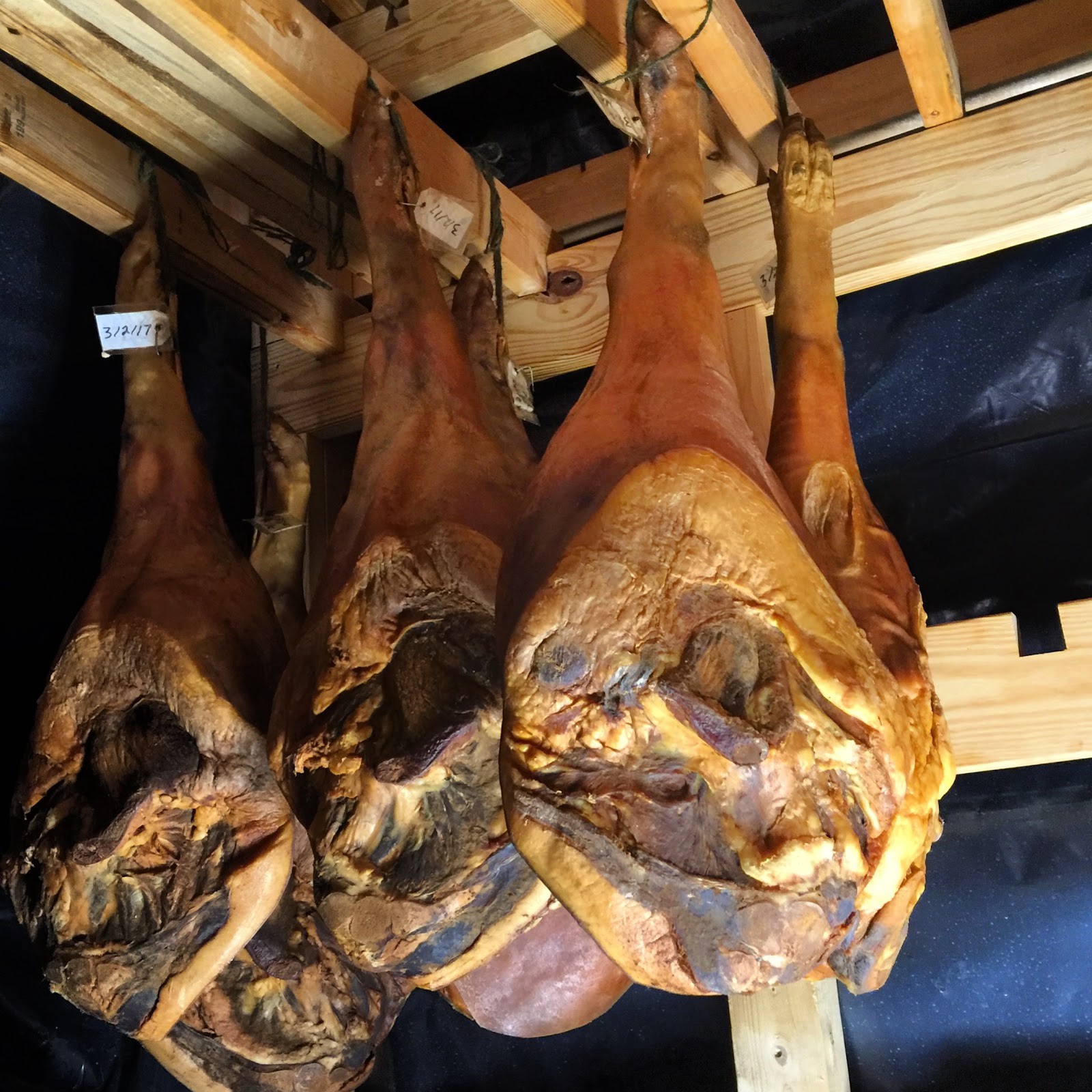 Country Hams aging in Murfreesboro TN (photo: Andrew McLeod)
Country Hams aging in Murfreesboro TN (photo: Andrew McLeod)
Let?s talk for a minute about nitrites.
Kosher and/or sea salt, nitrate, and nitrite are the main curing agents in meat production. Salt is invariably present in cured meat products and I?ve done some experiments to limit the amount of granulated salt in recipes by substituting things like miso or various amino sauces in place of kosher salt with mild to moderate success rates. However, using this approach is simply adding salt in a different form, and at the end of the day, salt is the most necessary and basic component to curing anything.
Traditionally in Italy, salt harvested in a particular area tended to yield better results when used in salted meat production. Years later, it was found that the nitrite levels naturally occurring in this sea salt were very high. The collective, generational knowledge gained from paying attention to the details of the process allowed humans to understand how to achieve these goals before they knew the science behind them. These parallels in salted meat production are apparent in all areas of the world. Country Ham is our contribution from the Southeastern United States. For this reason, I and many others view salting meat and making Country Hams as a magical process.
Nitrates and nitrites are some of the most common, compounds occurring naturally and necessary in our diets, whether we eat processed meats or not. They are both ever-present in our bodies. Most leafy vegetables contain more than 300% more nitrite by weight than commodity processed meats. Both of these compounds are essential to every cured meat process that we see in the market. From pepperoni pizza to hot dogs to the $800 per pound Spanish style hams produced domestically. It is illegal in the United States to produce these types of products without acceptable percentages of these essential ingredients. Adding either of these compounds as part of a responsible cure cycle will ensure that dangerous pathogens limit their growth to acceptable levels in order to carry a stable muscle through a long period of aging and thereby developing complex aroma and flavor compounds.
It?s crucial to include these chemicals in these processes whether synthesized or produced ?naturally? by fermenting and dehydrating celery juice. Yes, fermented and dried celery juice is the ?all natural? curing agent made popular in labeling a product ?nitrite free.? In the real world, this product has just as much nitrite as anything else on the shelf, the difference is that the added cost of this product is passed on to the consumer. The book ?Olympia Provisions? by Elias Cairo and Meredith Erickson explain very succinctly why our culture turned against products containing nitrites.
?In the 1960s, we had a bacon and ham boom, and the meat makers of the era tried to fill the demand fast. They pumped an ungodly amount of nitrite into their meat so it would turn pink and develop a cured flavor as quickly as possible. This left way too much nitrite in the meat. When you have a lot of excess nitrite in the meat and then add high heat ( for example, frying it in a hot pan), you can produce a poison called nitrosamine. This was found to be carcinogenic in large doses.?
In classic fear inducing fashioned, media took these facts out of context and created a society wide ?nitrite scare?. It?s true that high amounts of nitrite are dangerous to humans when cooked at high temperatures, however the money hungry meat producers in the 60s were to blame for this scare, not the use of nitrites themselves. Nitrites and Nitrates are essential to successful meat curing, but should be handled and used by professionals who care for and respect their work, otherwise a Country Ham could kill you.
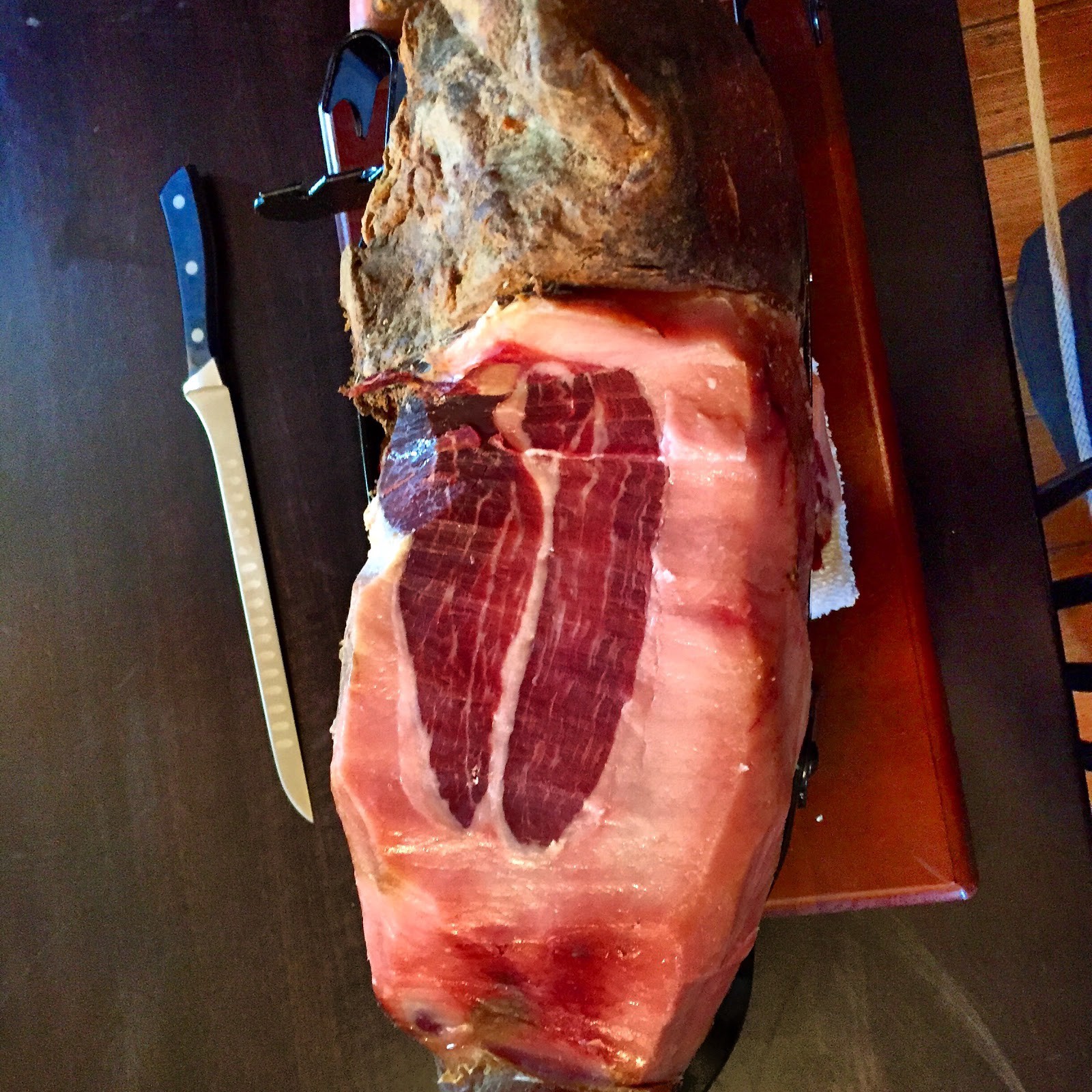 24 month Country Ham (photo and ham: Andrew McLeod)
24 month Country Ham (photo and ham: Andrew McLeod)
